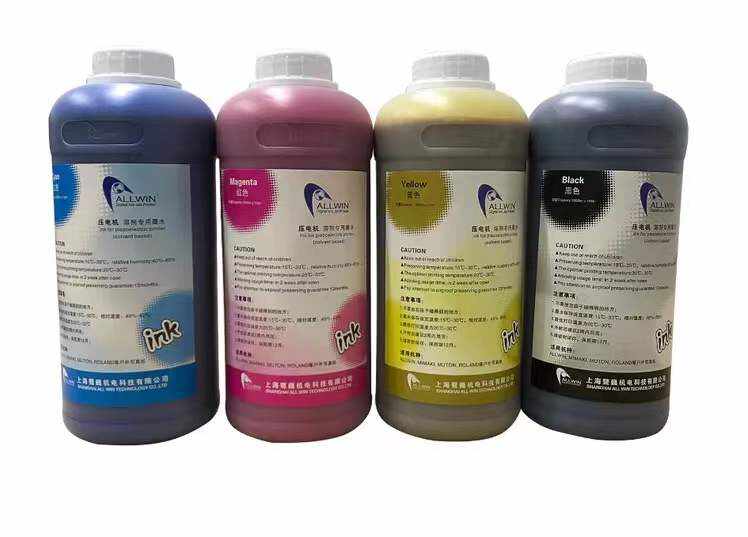Printer Ink: The Secrets You don't Know
July 27,2022
Many people think the ink of an inkjet printer is ordinary water and paint, but there is a lot of knowledge about it. For thirty or forty years, printing equipment enterprises have been trying to promote the progress of ink technology. Today we will uncover the secret of printer ink.

Why CMYK color?
Speaking of color printers, anyone who has bought them will find that their color configuration is not RGB used on TV, but a set of CMYK color systems. Why?
The pixels of the camera and TV are RGB. So let's recall, what color is the night? Black and a little starlight. When our TV is turned off, the screen is also black. And RGB three pixels are bright, mixed is white light, which is the primary color system, using addition.
But the printer is different. The paper we use for printing is white. To get the color, because the white light already contains RGB, we do subtraction. Subtracting RGB from white will get CMY, cyan, magenta, and yellow. These colors are mixed, which is black.
But why is black ink alone? In theory, three colors of CMY are enough, but in fact, we can't find the perfect pigment, so the three colors of CMY mixed are often cyan black, so separate black ink is needed to realize black printing, especially printing documents.
What is dye?
Dyes have been extensively studied since the 19th century. The earliest synthetic dyes came from coal tar. The dye ink printer is the earliest form of inkjet printer. Why is dye ink so popular? Because the dye industry is more mature.
Dyes are characterized by being soluble in water. The first artificial organic dye, mauveine, was invented by William Henry Perkin in 1856. Since then, thousands of dyes have been invented. So 99% of the ink in the printer is pure water and 1% is a dye, which is enough to give us enough colors.
Dye ink printing is made of dyes that are easy to dye on fibers. At the same time, this kind of dye is required to have a certain thermal stability, because thermal foaming printing needs to heat the ink to boiling. At present, the dyes used in printers are all organic compounds. The advantages and disadvantages of dye ink are obvious. The advantage is that the color is bright and accurate, and it is easy to achieve high-quality photos. The disadvantage is that the photochemical reaction and oxidation reaction of organic compounds will cause fading.
What is the paint?
As the saying goes, a good horse matches a good saddle. No matter whether it is a photo printer or a commercial ink-jet printer, an ink-jet printer with excellent performance can only play its best performance by matching the corresponding original genuine ink. At present, the ink used by mainstream printing manufacturers in the market is mainly divided into dye ink and pigment ink. As the name suggests, dye ink takes dye as the color base, and the dye can be completely dissolved in various solvents such as water. Therefore, it has strong hydrophilicity, poor water resistance, and weak light resistance, but it has certain advantages in color expressiveness. Pigment ink is a "suspension" with pigment as the "solute". Pigment particles are not fully fused with water-like dyes, but "suspended" in solvents.
Because of this, pigment ink has more advantages than dye ink in water resistance, light resistance, oxidation resistance, and so on. At the same time, pigment ink can achieve a clearer and sharper printing effect on ordinary paper. Considering that commercial users mainly use ordinary paper, pigment ink is more popular with commercial users.
It is not difficult to see that for professional photo printer users who use photo printers and have higher requirements for color transition, dye ink is more suitable for their needs; For the general home photo printer users, dye ink and pigment ink are good choices; For users of commercial inkjet printers, whether printing commercial documents, contracts, design drawings, single pages of products and other commercial documents, due to the needs of long-term storage, complex use environment, common use in rainy and dry seasons, it is obvious that waterproof and light-resistant panchromatic waterproof pigment ink is more in line with their needs.
What ink does the printer use?
This is an interesting question. There is no standard answer to comprehensively consider the purpose and cost of printing. For example, pigment inks have made rapid progress in recent decades. Dye ink used to be used more by top photo printers because of its good hair color, but now top photo printers use pigment ink instead. In the household environment, dye is still the main factor.
Considering that pigment inks are already very cheap, the current ink solutions are generally black pigments and color dyes, which makes it easier to balance the ink cost of printing equipment.
For more information about dry sublimation ink, digital sublimation ink, dry sublimation ink, plz feel free to contact us.